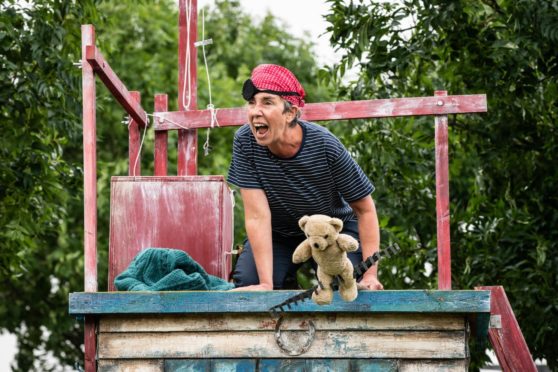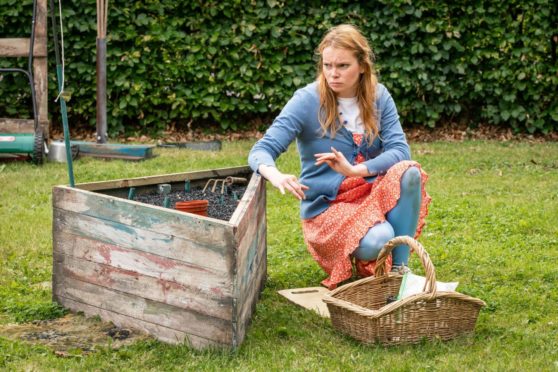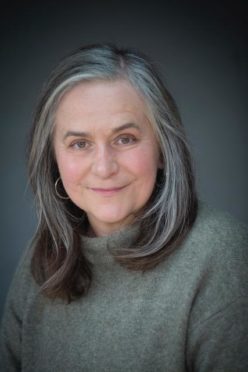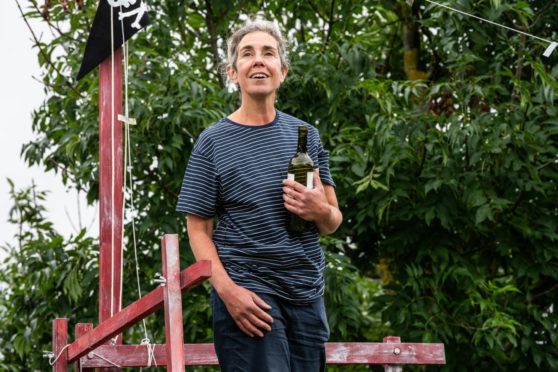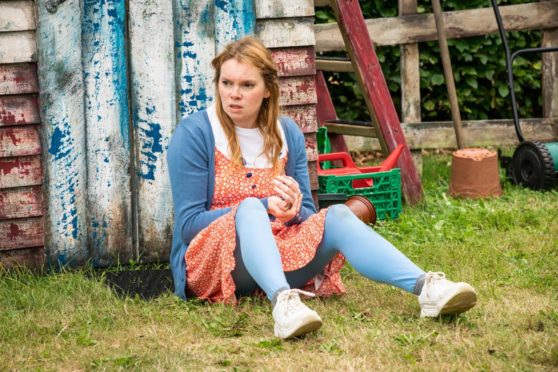St Andrews theatre fans are in for a treat this weekend as critically-acclaimed play Allotment comes to town after a ten-year break.
Allotment, created by Edinburgh-based company Nutshell Theatre, follows two sisters, Dora and Maddy, as they navigate their lives and their rivalry with one another.
And it takes place, as the name suggests, on their allotment – meaning it is a ready-made piece of outdoor theatre for the Covid world.
‘A breath of fresh air’
“Allotment was created to be performed outside,” explains Nutshell artistic director Kate Nelson, “so it’s not got that really weird thing about having to become something that could be a piece of outdoor theatre.
“It is a piece of outdoor theatre.”
And with recent restrictions meaning shows could only be performed outdoors, and Creative Scotland providing funding for Covid-safe productions, 2021 seemed like the perfect year to reprise the hugely popular show, which was first performed in 2011.
“We felt it would work as a piece of theatre people would feel safe to come and see,” says Kate, who founded Nutshell Theatre 21 years ago. “And because it’s a play where you sit within nature, it’s very different to watching telly.
“It’s kind of the absolute opposite of the Netflix experience we’ve all had for the last year – it is quite literally a breath of fresh air!”
Show must go on – whatever the weather
Indeed, one of the cornerstones of this quirky performance is that is goes ahead whatever the weather – rain, sleet, or snow – meaning audiences and actors alike brave the elements of the Allotment.
“It’s quite exhilarating, watching a play outside,” smiles Kate. The play was written by Scottish playwright Jules Horne, but the idea for it came from Kate’s own allotment, back in 2009.
“I came up with the idea of doing the show on my allotment because I was there after doing the Fringe all day at Edinburgh,” Kate explains.
“I came back down to my allotment to pick French beans before I went home and I was stood there and I just thought: ‘God, I should do a show here.’
“So I worked with Jules Horne. We actually did devising work on the allotment in the massive howling sleet, and she then went away and created the play off the back of that.”
Going green to help show grow
It’s no surprise, given its garden setting, that Allotment is a play concerned with the environment.
And with the upcoming COP26 conference coming to Glasgow this year, Kate reckons the play’s reprisal is doubly appropriate.
“Allotment won an award for sustainable theatre when it first went out, because it’s very low carbon,” she explains. “It’s been created to be as minimal in its environmental impact as possible.
“But also it’s a play that sort of sits within an environment and has a conversation about that – so with COP26 coming, that felt like a good fit too.”
The show uses “smart touring” (planning to avoid doubling back) and just one vehicle for all the crew, cast and equipment, to cut down its carbon footprint, as well as printing recyclable programmes and reusing costumes and props as much as possible.
Sustainable theatre is a topic coming up more and more recently, with the Green Book initiative and trailblazing Scottish organisation Creative Carbon leading the way.
But for Kate, green practises have always been a priority.
“It’s part of who I am,” she says. “It’s my company, and I’ve been environmentally responsible and campaigning since I was in my twenties – I’ve never not been green.
“Obviously one of the conversations that’s come out of Covid has been the idea of people reconnecting with the outdoors. There has been a sort of understanding of what the natural world gives us.
“And I think that theatre quite often reflects the world around us, we lens the world for our audiences.”
‘A cracking story’
As for the play itself, Kate reckons the main reason it has been so popular both ten years ago and now, is that it simply “tells a really great story” with a dose of dark humour.
“In Scotland, we have a massive storytelling tradition,” she says. “And our audiences love stories – they love to be told a cracking story.
“It’s about allotments,of course so it’s got this topic of gardening. And you don’t get more obscure than a gardening gag!
“But it’s also about family relationships – that ‘can’t live with them, can’t live without them’ things that you have with your family, where they drive you mad but you adore them in equal measure.”
Allotment is coming to St Andrews Botanic Gardens in association with the Byre Theatre on Sunday August 29, with shows at 2pm and 4pm.
